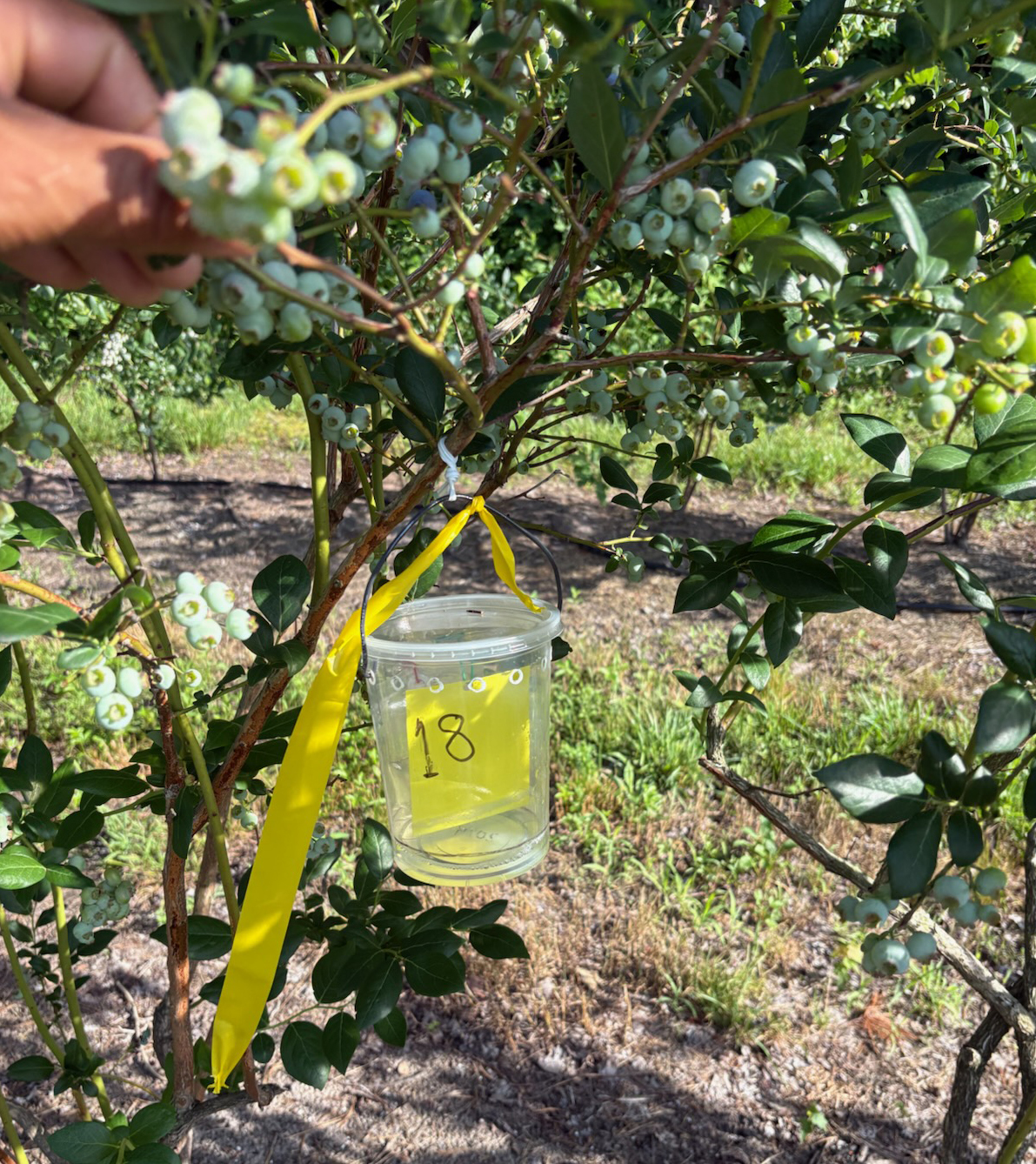West central Michigan small fruit update – July 9, 2025
Blueberry harvest is underway in west central and southwest Michigan. Hand-harvest of early-season varieties like Duke started last week. Fruit quality and size are excellent.

Blueberry harvest has officially begun in west central and southwest Michigan. Early-season varieties like Duke have started ripening, and hand-harvest operations began last week. Fruit quality is excellent, with good size, flavor and promising yields.
Early pest issues under control
Minor issues with flower thrips and fruitworms were reported during bloom and early fruit set. However, most growers successfully managed these pests with timely interventions.
The main concern is the early arrival of spotted wing spotted wing drosophila. Monitoring stations in Ionia and Grand Junction are already capturing large numbers of spotted wing drosophila flies, primarily first-generation summer females. Less than 1% are overwintering flies, indicating the beginning of a new infestation cycle. This increases the risk of fruit infestation by spotted wing drosophila larvae. With wild fruit starting to ripen, there is potential for increasing pressure from spotted wing drosophila as we move through the harvest season..
Recommended integrated pest management strategies for spotted wing drosophila
- Monitoring and timing
- Use traps to detect spotted wing drosophila activity in your field. This can help inform timing of control measures, but it doesn’t have a good link to the risk of infestation in berries like we see with some other insect pests (Figure 2).
- Use fruit sampling to determine whether fruit infestation is starting to develop and allow time for a timely intervention. The following short video shows this method:
- Insecticide selection
- Hot weather (greater than 80 degrees Fahrenheit): Choose insecticides less affected by heat, such as Lannate, Imidan, Brigade or Delegate.
- Avoid: Mustang Maxx, which loses efficacy above 80 F and provides control for only about three days.
- Organic options: Entrust offers systemic control of larvae and has a one-day preharvest interval (PHI).
- Preharvest considerations
 copy Tramp.jpg?language_id=1)
If spotted wing drosophila trap counts are high during harvest, use insecticides with larvicidal activity to protect fruit:
- For hand-harvested fresh fruit, Assail (neonicotinoid) can support other insecticides due to its systemic action and has a 24-hour PHI.
- Entrust is the best option for organic production but must be rotated with another product such as Grandevo.
- If harvesting is expected after 72 hours:
- Use Lannate or Imidan, both of which provide long-lasting control of adult flies and larvae.
- Note: Imidan is not rainfast—avoid using it if rain is expected within 72 hours.
- Both Lannate and Imidan have a 72-hour PHI.
- Note: Lannate cannot be used on a U-pick field.
Additional insect pest concerns
Be aware of Japanese beetle and blueberry maggot fly. Both are currently affecting blueberry fields.
Japanese beetles are feeding on ripe fruit. They are especially prevalent in fields with ground cover or located near wooded areas. If you plan to machine harvest, apply insecticides for control beforehand.
Blueberry maggot populations are also increasing, with high numbers already reported in monitoring traps. Notably, more blueberry maggot larvae were found in harvested fruit last year than spotted wing drosophila. Monitoring with yellow sticky traps is essential, and timely insecticide applications are necessary to prevent larval contamination of harvested fruit.
Effective insecticides for both pests include:
- Brigade
- Lannate
- Imidan
- Delegate
- Mustang Maxx (efficacy may be reduced at temperatures above 80 F)
Always follow label directions and preharvest intervals.
Additional recommendations
For other insecticide options and recommended application rates, consult the Michigan Fruit Management Guide from Michigan State University Extension. You may also contact your local MSU Extension office for additional guidance.
This work is supported by the Crop Protection and Pest Management Program [grant no 2024-70006-43569] from the USDA National Institute of Food and Agriculture. Any opinions, findings, conclusions, or recommendations expressed in this publication are those of the author(s) and do not necessarily reflect the view of the U.S. Department of Agriculture.



 Print
Print Email
Email
